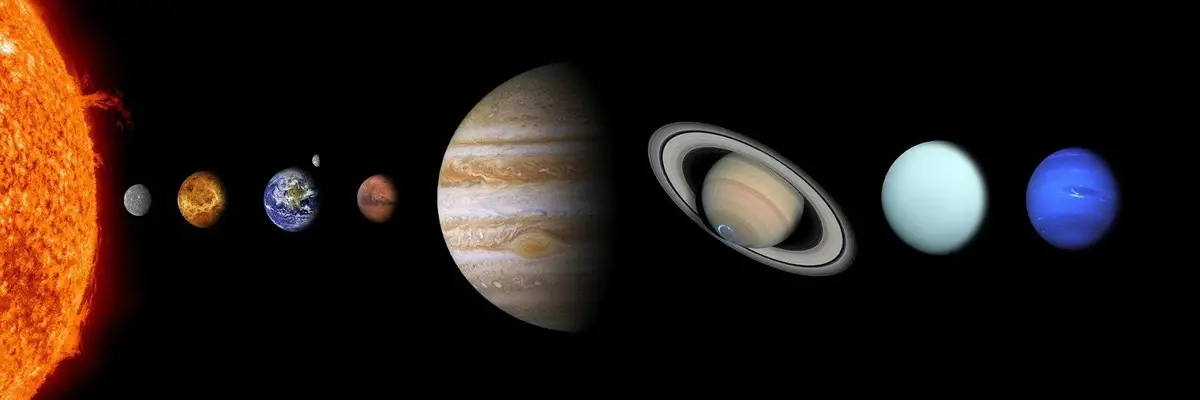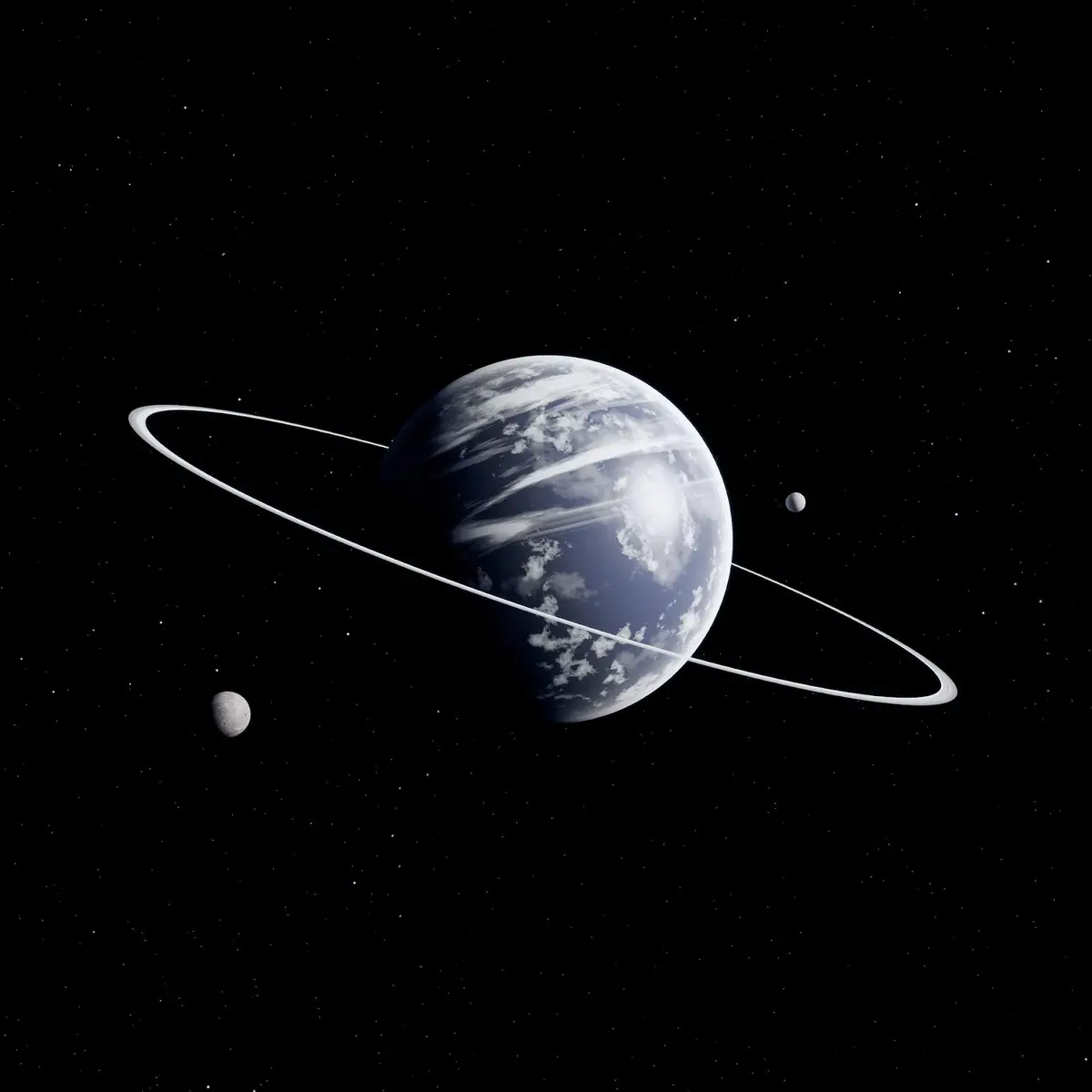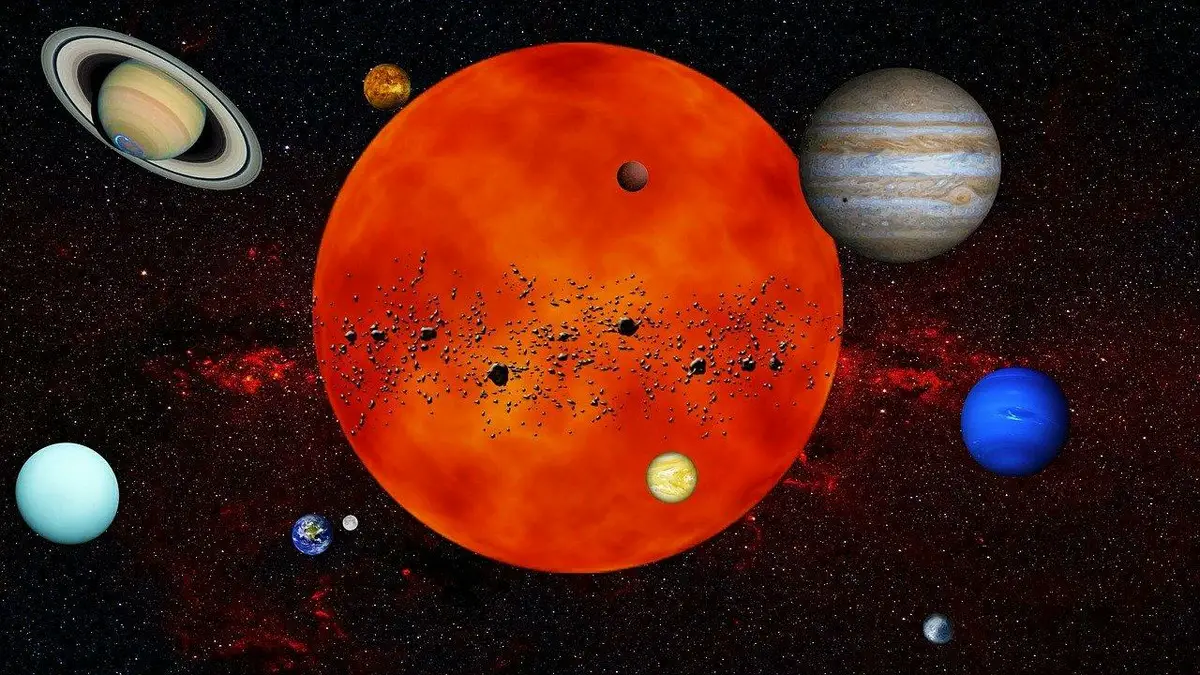
Christened after the Roman god of the sea, the final planet of the solar system is a bit of a cold and dark mystery. While there are plenty of things yet to be discovered, we have made some detailed observations since the planet’s discovery.
One of those observations is Neptune’s distance from Earth and the Sun. This article will cover all details about the how far the planet is from the Sun and our planet.
Ready? Let’s get started.
How Far Away Is Neptune From The Sun & Earth?
The constant movement of planets through space results in constantly shifting distances between the planets. With respect to one planet with another, we see differences in the distances between them at different times.
In the case of Neptune and Earth, during their closest approach to each other, they stand at 2.7 billion miles apart. Once they are positioned on opposite sides from across the Sun, the distance increases with a total of 2.9 billion miles between them.
As with any other planet, Neptune’s distance from Earth is constantly shifting. Its distance from the Sun also keeps shifting.
At its closest to the Sun, the planet lies at 2.77 billion miles. It puts in 2.82 billion miles at its farthest from the star.
About Neptune

Galileo Galilei was the first astronomer to spot the planet of Neptune. However, its full discovery was made in 1846.
It is the eighth and last planet in our solar system. The planet’s extreme distance from our planet and the Sun resulted in its late discovery. Known as the ice giant, the planet is host to supersonic winds.
Length of a Day
The length of a planet’s day is the time taken by it to rotate one time on its axis. Neptune’s speed of rotation on its axis is 1.66 mph. This is faster than Earth’s rotation speed.
Neptune completes a single spin on its axis in just 16 hours. A planet’s rotational speed is a measure of its core’s rotational speed. With ice giants, it is harder to get accurate speeds because of their icy small solid core.
Length of a Year
The length of a planet’s year is the time it takes to complete one revolution around the Sun. While Earth’s year is made up of 365.25 days, where each day is 24 hours long, Neptune’s year is equivalent to 165 Earth years!
Though a single day on Neptune is shorter than an Earth day, its year is much longer. When we compare Neptune with Earth, this data translates into faster rotational speed but slower orbital speed around the sun for Neptune.
Since the discovery of the icy giant, it has completed a single orbit around the Sun in July 2011.
Seasons
Neptune has a 29-degree axial tilt. This tilt, in addition to its extremely long year, results in 40-year seasons.
In the Solar System, Neptune is the only one with such bizarre weather conditions. The planet is host to extremely windy storms. Dark spots come and go in its atmosphere. Additionally, there are rapidly changing bright cirrus-like clouds.
The average temperature on the planet is -373 Fahrenheit. The hemisphere that faces the sun receives the most sunlight during summer. As the season progress, the brightness of the cloud bands increases.
It is interesting how Neptune experiences various seasons, especially such intense seasonal changes, considering how further away the planet is from the sun. Compared to Earth, it receives about 900 times lesser sunlight.
Distance of Neptune from the Sun

All planets in the solar system orbit the Sun. The orbit occurs in an ellipse. This causes the distance to constantly change.
Neptune’s distance from the Sun at its closest is 2.77 billion miles. When the planet is at its farthest from the Sun, it is at a distance of 2.82 billion miles.
Despite Neptune’s status as the eighth planet in the order of planets in the solar system, there are times when Pluto took over the position. When Pluto was considered a planet, its lineup in the solar system led to it taking over Neptune’s eighth position.
There are times when Pluto swerves into Neptune’s orbit briefly. This brief duration lasts 20 years. When this happens, Pluto’s distance from the Sun is much closer than Neptune’s.
However, since they are positioned at different orbital points during the crossing, the two planets do not collide. In other words, because for Neptune’s every three rounds around the sun, Pluto makes only two. This prevents them from being in the same orbital point at the same time.
Distance of Neptune from Earth
When Neptune is closest to our planet, it is at a distance of 2.7 billion miles. When it is at its farthest from Earth, 2.8 billion miles lie between the two planets.
The distance between planets is constantly changing during the course of their orbit around the Sun. In instances when Neptune is positioned behind the Sun, it leads to an alignment of Earth, the Sun, and Neptune, with the Sun between the two planets. This specific alignment is called solar conjunction.
Earth and Neptune are as far away as they can be, with a distance of 2.82 billion miles between them.
Due to the constantly changing distance, Earth and Neptune are closest to each other when they are positioned on the same side of the Sun. This lineup is called opposition.
Opposition places Earth in between Neptune and the Sun. This results in about 2.7 billion miles between them.
During its closest approach to Earth, Neptune is not visible to us because of its magnitude of 7.8. Even with a telescope, the distance between our planet and Neptune is so vast, it is nearly impossible to discern more of it. Instead, we see a point-like star.
At present, Neptune holds the title of the solar system’s most distant planet.
How Long Does It Take to Travel from Earth to Neptune?

The constant movement of the two planets is the biggest determining factor in the time it takes to travel from one planet to the other. When the planets are at their closest, a launched satellite will reach Neptune earlier than when it is launched at the planet’s furthest positions from each other.
Neptune has only been visited by one spacecraft—Voyager 2. This spacecraft took off into space from Earth on August 20, 1977. After years of travel, the craft had its closest approach to Neptune on August 25, 1989. It was able to observe the planet’s ‘Great Dark Spot’.
Besides Voyager 2, no other craft has ventured to this planet. However, New Horizons, a spacecraft that was travelling to the Kuiper Belt and Pluto, traversed Neptune’s orbit in 2015.
Let’s take a look at how fast light reaches the planet from Earth.
Time Taken for Light to Travel from Neptune to Earth
Since light has no mass, it has the fastest travel speed among all known objects—186,282 mph. At this speed, the time taken by light to travel from the Sun to our planet is 499 seconds. This distance it covers is called astronomical unit or AU.
Now, take into consideration the average, longest, and shortest time light takes to travel across Earth to Neptune.
If the farthest distance is 2.82 billion miles or 30.1 AU, then 30.1 multiplied by 499 gives 15,020 seconds or 4.17 hours.
This means it takes light 4.17 hours to travel from Earth to Neptune at its farthest distance of 2.82 billion miles. There is a slight variation in this time as the planets move around the Sun.
If the average distance is 2.76 billion miles or 29.60 AU, then 29.6 multiplied by 499 gives 14,770 seconds or 4.10 hours.
For the shortest distance of 2.7 billion miles, it takes 4.03 hours for light to reach from our planet to Neptune.
When you spot Neptune with your telescope, you are getting a glimpse of how it looked four hours ago!
Frequently Asked Questions
Are There Any Rings Around Neptune?
The planet is surrounded by several faint and dark rings. We first became aware of them in the 1980s. There are three main rings that are thin and dark. Dust and small rocks are their primary constituents. The thickness of the rings varies all around.
What Color Is Neptune?
Neptune’s atmosphere consists of methane, hydrogen, and helium. The presence of methane in the planet’s upper atmosphere reflects blue light into space. This gives Neptune the appearance of a blue planet.
How Is the Gravity on Neptune?
Despite being larger in size than Earth, Neptune’s surface gravity is on par with Earth’s. Unlike Earth, Neptune is a gas giant without a solid surface layer. That is why in spite of its size, the planet is light.
Summary
The distance between the Sun and the final planet in the solar system is vast. The average distance between the two lies at 2.79 billion miles. This astronomical distance means it takes Neptune 165 Earth years to complete its revolution around the star.
The average distance between Earth and Neptune is 2.76 billion miles.
